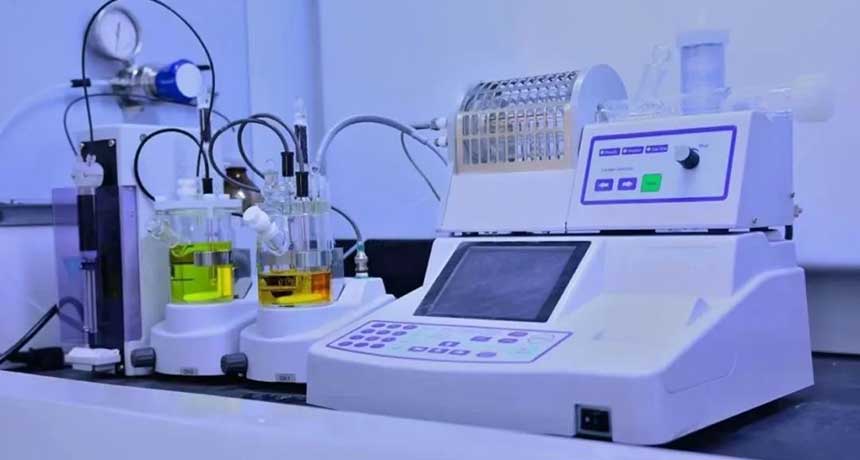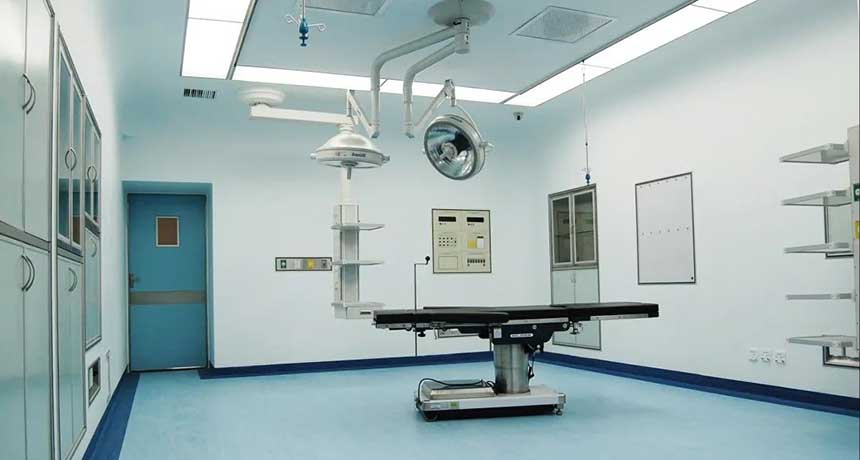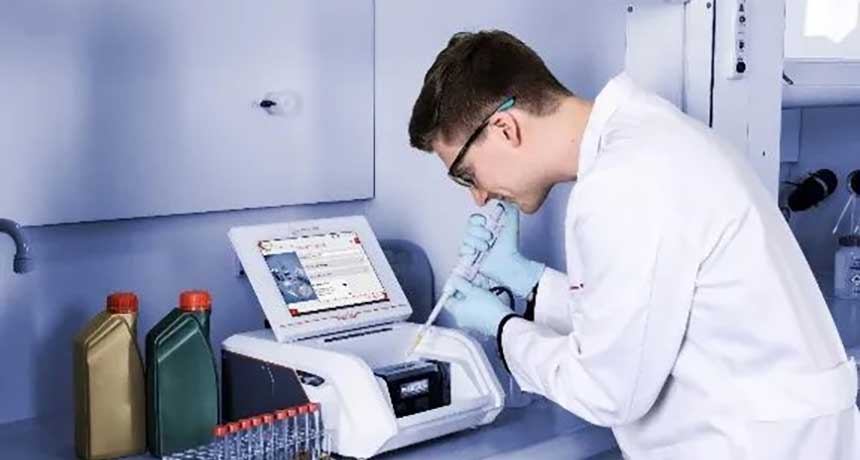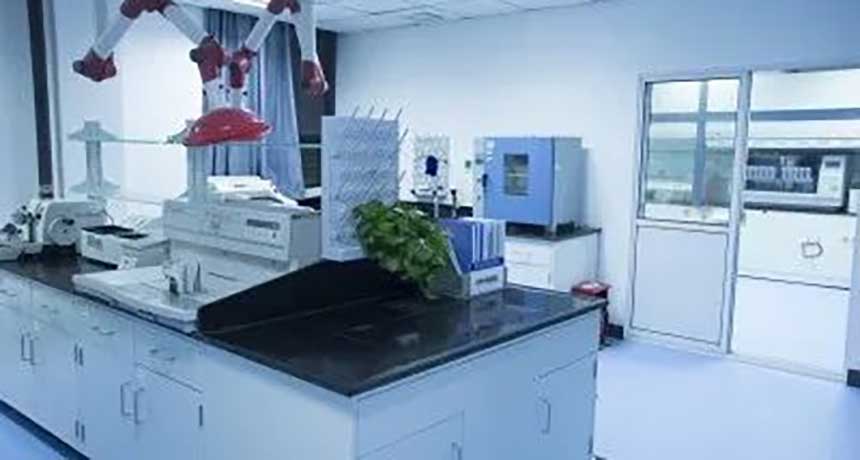Ventilators are important equipment used in the medical field to treat respiratory dysfunction. Their normal operation and maintenance are crucial to the life safety of patients.
1. Common problems in maintenance and management of ventilators
Most ventilators are used in emergency rescue situations. Medical staff have to make various preparations before using the ventilator while rescuing the patient. They are often "in a hurry". Even the machine that has been pushed to the patient's bedside fails after it is turned on and connected to the patient's tracheal intubation, and needs to be replaced.
It is impossible for every department to be equipped with a ventilator. Sometimes a department needs multiple ventilators, so there are many temporary borrowing situations.
The storage location of ventilators in most departments is not good, causing machine failure or hidden dangers of failure.
Clinical departments do not pay much attention to the disinfection of ventilators and pipelines.
Many clinical departments connect the ventilator pipeline to the ventilator for a long time, causing some pipelines to bend for a long time and easily break, resulting in unnecessary waste.
Medical staff in clinical departments often worry about the use of ventilators and daily maintenance, cleaning and disinfection of ventilator pipelines in their busy daily medical work.
The ventilator needs maintenance after a certain period of use. Therefore, a good ventilator management model will help improve the utilization rate of the ventilator and ensure that the ventilator is always in good performance or in good standby state.
2. Ventilator disinfection method
Principles of ventilator disinfection
Only by strictly disinfecting the ventilator can cross infection be reduced and avoided. The ventilator should be thoroughly cleaned first, especially the part that contacts the patient's exhaled gas, such as pipes, heated humidifiers and exhalation valves (some ventilators have bacterial filters). They can be rinsed with a cleaning agent first to thoroughly remove the secretions, sputum crusts, blood stains and other residues, and then disinfected. After disinfection, rinse with distilled water and dry for use. Avoid re-contamination of items during the entire disinfection process. During disinfection, various connecting parts should be disconnected to achieve the purpose of full disinfection. The ventilator pipeline disinfected with chemical disinfectants should be cleaned with distilled water. It is recommended not to use tap water to avoid unnecessary pollution.
Ventilator cleaning and disinfection method
Ventilator disinfection mainly refers to the disinfection of the airway pipeline system of the ventilator. The common ventilator air circuit structures can be roughly divided into three types:
The first type: the air circuit inside the host, the patient's inhalation and breathing circuits, can all be disassembled for cleaning and disinfection.
The second type: the internal air circuit system of the ventilator host cannot be disassembled, only the patient's inhalation and exhalation circuits can be disassembled for cleaning and disinfection. Dirt and bacteria may remain in the parts that cannot be disinfected. To prevent infection, designers install bacterial filters at the outlet of the ventilator air circuit.
The third type: similar to the second type, except that there is only a patient inhalation circuit and no exhalation circuit. The exhalation circuit is replaced by an exhalation valve.
a. Cleaning
(1) Pipeline cleaning: Carefully check whether there is sputum crust, blood stains, oil stains and other dirt residues in the pipeline. If it is not rinsed clean, it is difficult to achieve the purpose of thorough disinfection.
(2) Sensor cleaning: Since sensors are precision electronic products, they are expensive and have their own performance characteristics. They must be cleaned according to the instructions or operating instructions of each ventilator.
(3) Cleaning of the main unit inside the ventilator: The main unit inside the ventilator is mostly electronic components and cannot be cleaned using conventional methods. It needs to be maintained regularly by engineers.
(4) Cleaning of the ventilator shell: The ventilator shell can be gently wiped clean with warm water gauze.
b. Disinfection
Common disinfection methods for ventilator pipelines include drug immersion disinfection method and gas fumigation method.
(1) Drug immersion disinfection method
Drug immersion disinfection method is the most commonly used method for ventilator pipeline disinfection. Its characteristics are simple method and no special equipment is required. When disinfecting, only a large container is needed to prepare the drug solution.
The following points should be noted when using the drug immersion disinfection method:
(a) The disinfected equipment must be clean of sputum crust, blood stains, oil stains, etc.
(b) The disinfected items must be completely immersed in the solution, and no bubbles should be left in the cavity of hollow items.
(c) Items with sleeves and shaft joints must be detached to avoid sticking after disinfection.
(d) After disinfection, the disinfectant must be rinsed clean with sterile distilled water before use.
There are three types of commonly used disinfectants:
(a) 2% glutaraldehyde solution: pH 7.5-8.5, soak at room temperature, kill viruses in 10 minutes, kill bacterial spores in 3-10 hours, and kill other bacteria almost immediately except tuberculosis bacteria. The disinfectant can be used for two weeks after preparation. It is suitable for disinfection of metals, rubbers and plastics. It is highly irritating. Rubber gloves should be worn and the soaked instruments should be thoroughly rinsed.
(b) 2% glutaraldehyde acidic solution: pH 2.7-3.7, soak at room temperature, kill viruses and fungi in 10 minutes, kill tuberculosis bacteria in 20 minutes, and most other bacteria can be killed. It is ineffective against spores. The sterilization effect increases with the increase of temperature and is non-irritating.
(c) 2% glutaraldehyde neutral solution: pH 7.0-7.5, kill bacteria, fungi, viruses and tuberculosis bacteria in 10 minutes, and spores need 10 hours. It is irritating. It can be used for 20 days after preparation.
(2) Gas fumigation disinfection method
Ethylene oxide gas disinfection can kill molds, spores and larger viruses, but its effect on hepatitis viruses is still unclear. Ethylene oxide can penetrate rubber, plastic, cellophane, etc., is non-corrosive and non-destructive, and is a relatively ideal disinfection method. The following points should be noted when using this method for disinfection:
(a) Ethylene oxide has a low boiling point and is flammable and explosive when exposed to fire. Care should be taken to avoid contact with open flames.
(b) Skin contact with liquid ethylene oxide will cause blisters; gaseous ethylene oxide can irritate the bronchi when inhaled into the body, causing symptoms such as headaches and vomiting. Therefore, special equipment must be used for disinfection. The disinfection process is long and expensive.
(c) After ethylene oxide disinfection, the validity period is one year, but it cannot be used immediately after disinfection. It must wait for a week for the ethylene oxide to evaporate before it can be used.
(3) High-pressure steam disinfection method
The metal parts and high-temperature resistant parts of the ventilator that need to be disinfected can be sent to the supply room for high-pressure steam disinfection according to specific circumstances.
c. Disinfection of humidifier
During the use of the ventilator, if it is equipped with filter paper, the inner lining filter paper should be replaced, and the liquid should be replaced in time (the liquid in the humidifier of the ventilator in use should be replaced every day to reduce bacterial growth). Sterile distilled water should be injected into the humidifier to prevent the crystals in the liquid from precipitating and damaging the evaporator, affecting the humidification effect. In order to avoid the growth and reproduction of pathogenic microorganisms and the corrosion and damage of the ventilator, the liquid in the humidifier should be poured out after each use, and the humidifier should be soaked, disinfected, and dried for standby use.
d. Daily disinfection
Refers to the work performed when the ventilator is used for a long time. Usually, the surface of the ventilator is cleaned once a day, and the exhaled air pipeline connected to the patient is removed and disinfected, and the new disinfected pipeline is replaced to continue working. In addition, according to the specific situation, all pipelines and humidification bottles can be disassembled and disinfected every week, and the spare pipeline can be replaced to continue working. After the pipeline is replaced, it must be registered and filed. At the same time, the air filter of the ventilator host needs to be cleaned daily to prevent dust accumulation and affect the internal heat dissipation of the machine.
e. Handling of special infection items
Items used by patients with special infections can be treated once and discarded after one use. You can also use 2% glutaraldehyde neutral solution to soak for 10 minutes to kill bacteria, fungi, viruses and tuberculosis bacteria, and spores need 10 hours. It needs to be rinsed with distilled water and dried, and sent to the supply room for ethylene oxide gas fumigation disinfection.
f. Terminal disinfection of ventilator
Terminal disinfection refers to the disinfection treatment after the patient stops using the ventilator. At this time, all the pipeline systems of the ventilator need to be removed one by one, thoroughly disinfected, and then reinstalled and debugged according to the original structure.
3. Maintenance of ventilator
Maintenance work is an important link that is indispensable to timely eliminate hidden dangers of ventilator, avoid damage, ensure that the ventilator is in normal working condition or in good standby condition, improve the success rate of rescue, extend the service life of ventilator, and improve economic benefits. Maintenance work is mainly based on the performance of the ventilator and the service life requirements of accessories, regular cleaning, disinfection of pipelines, replacement of consumables, and detection of host functions. Due to the wide variety of ventilators, complex structures, different performance and maintenance requirements, and the high price of ventilators, they should be managed by specially trained personnel.
Replace consumables regularly
Regularly check and replace oxygen batteries, valves, leather pads, bacterial filters and filters, etc. The ventilator should be maintained and repaired by an engineer every 1000 hours of operation, and the name and time of each replacement of consumables should be recorded in detail and archived for inspection.
Ventilator inspection, comprehensive inspection of ventilator function
a. Leakage detection
Check the ventilator's air system, various pipes, humidifier tanks, and water bottle interfaces for leaks. Due to the different models and working principles of ventilators, the detection methods are also different. Under normal circumstances, tidal volume measurement, pressure gauge detection, and ear and hand detection methods can be used for detection.
(1) Tidal volume measurement: First, pre-adjust the tidal volume of the ventilator, connect the simulated lung, and measure the tidal volume in the inhalation pipe and the exhalation pipe respectively. If the tidal volume detected by the two is the same, it means there is no leakage. If the tidal volume decreases, it means there is a leak. If a leak is found, you can listen and touch the pipes. The leak often makes a "hissing" sound during ventilation. If the pipe is damaged or the connection is not tight, you can detect the presence of airflow.
(2) Pressure gauge detection: mainly check the working pressure and airway pressure of the ventilator. If the working pressure is lower than the set level, it means that the air supply pressure is insufficient or the internal pipe of the ventilator host is leaking. If the airway pressure is lower than normal, it means that the external pipe is leaking.
b. Alarm system detection
Generally, ventilators are equipped with pressure, ventilation volume, suffocation and other alarm devices. You can simulate the working state of the ventilator, change the setting parameters of the ventilator; increase airway resistance; adjust various alarm upper and lower limits, and use the sound and light alarms on the ventilator to detect whether the performance of the alarm system is intact.
c. Detection of the ventilator monitoring system
For example, the inhaled oxygen concentration, tidal volume or flow rate needs to be corrected to zero.
d. Detection of the functions of the ventilator's additional instruments
Including whether the functions of the carbon dioxide analyzer, humidifier, nebulizer, etc. are intact.
After the above disinfection, installation, testing and calibration, the ventilator is in good standby state. It needs to be covered with cloth and a sign with the words "standby state" should be hung in a prominent position. It should be placed in a clean, tidy and ventilated room, ready for clinical use at any time.
The disinfection, maintenance and management of ventilators is an important and complex task, with many management factors and strong technicality. Therefore, the management of instruments and equipment should be the responsibility of personnel with certain management capabilities, professional knowledge and good ideological qualities, so as to improve the utilization rate and intact rate of ventilators, give full play to the practical value of ventilators, improve social and economic benefits, and better serve the clinical frontline.






